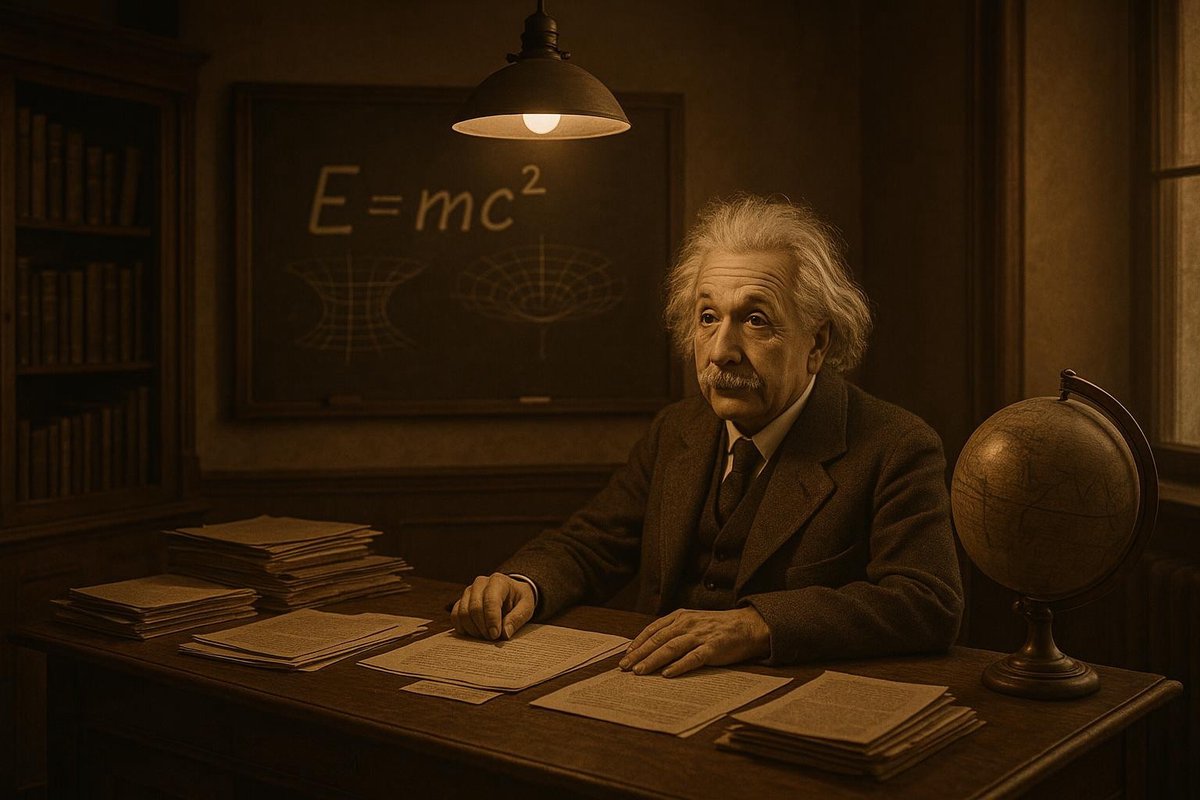
The Problem Context: Newtonian Physics Limitations
Have you ever wondered why GPS systems need Einstein’s Theory of Relativity to function accurately? Interestingly, without considering the effects of relativity, our devices would give erroneous positions, leading to navigational chaos. This brings us to the early 20th century when classical physics, dominated by Newton’s laws, began to show cracks. While Newtonian mechanics had long served as the bedrock of scientific understanding, it struggled to explain certain phenomena at high speeds and large scales. The limitations were especially evident in the realm of electromagnetic theory.
The cultural backdrop of this era was marked by rapid technological advancements and the turmoil of World War I, pushing the boundaries of what was known. The world was ripe for groundbreaking ideas that could transcend existing scientific paradigms. In this setting, the stage was set for an intellectual revolution.
- Newton’s laws couldn’t explain anomalies like Mercury’s orbit.
- Classical physics clashed with Maxwell’s equations on electromagnetism.
- The industrial era fueled a demand for new technological insights.
Thus, a new scientific hero was needed to answer the pressing questions of time and space.
Theoretical Breakthrough: Einstein’s Revolutionary Thinking
Enter Albert Einstein, a young scientist with an unyielding curiosity about the universe. In 1905, often referred to as his annus mirabilis, Einstein published four papers that would forever change the scientific landscape. Most notable among them was his special theory of relativity, which introduced a radical new way of thinking about space and time.
At the heart of Einstein’s theory was the idea that the laws of physics are the same for all non-accelerating observers, and that the speed of light is constant regardless of the observer’s motion. This concept was not just counterintuitive; it was revolutionary.
- Space and time are intertwined, forming a four-dimensional space-time continuum.
- Time dilation and length contraction occur at speeds close to that of light.
- The famous equation E=mc² emerged, illustrating the equivalence of mass and energy.
Einstein’s intellectual style was characterized by thought experiments, like imagining riding alongside a beam of light, which helped him explore these abstract concepts.
Supporting Evidence: The Eclipse Experiment and Beyond
Of course, theories require validation through empirical evidence, and for Einstein, this came with the famous 1919 solar eclipse expedition led by Sir Arthur Eddington. The experiment aimed to observe starlight bending around the sun, a prediction of general relativity.
When the results confirmed Einstein’s predictions, it was a landmark moment. The news captured global attention, elevating Einstein to scientific stardom and cementing his theories in the annals of scientific history.
- The bending of light confirmed the curvature of space-time.
- Gravitational waves, another prediction, were later detected in 2015.
- The experiment marked a shift from classical to modern physics.
Einstein’s ability to think abstractly and challenge established norms led to a paradigm shift in physics, opening the door to a new understanding of the universe.
Modern Relevance: Relativity’s Continuing Impact
As time goes on, the influence of the Theory of Relativity continues to permeate our modern world. Its implications extend beyond theoretical physics into practical applications that affect our daily lives.
Many people believe that GPS technology, which relies on precise time measurements, is one of the most relatable examples of relativity in action. Without adjustments for time dilation and gravitational effects outlined by Einstein, GPS systems would fail to provide accurate data.
- Astronomical predictions and space exploration rely on relativity.
- Quantum mechanics and relativity inform cutting-edge research in physics.
- Philosophical insights into the nature of reality and time have emerged.
The legacy of Einstein’s work demonstrates the enduring power of revolutionary thinking. It continues to inspire scientists and innovators to question, explore, and redefine the boundaries of knowledge.
In conclusion, Albert Einstein’s Theory of Relativity was more than a scientific breakthrough; it was a cultural phenomenon that reshaped our conception of reality. His ability to transcend traditional thought and explore new dimensions of understanding is a testament to the power of human curiosity.
Fuel Someone Else’s Curiosity
Are you fascinated by the intricate dance between space, time, and the human mind? Share this article with a friend who marvels at the mysteries of the universe. Let’s continue the conversation about how revolutionary ideas can change our world. Our curiosity is the spark that fuels the fires of discovery.

Leave a Reply